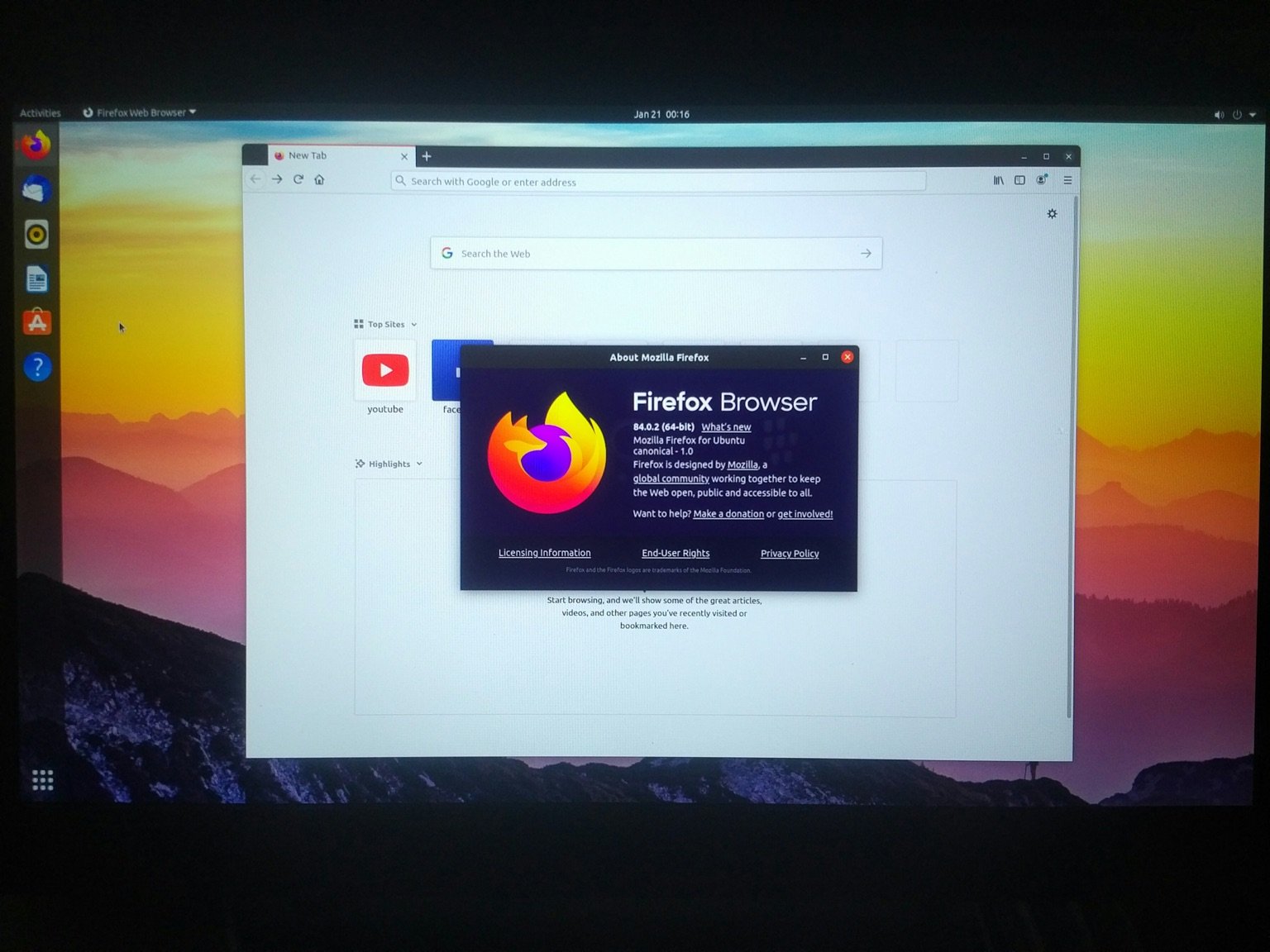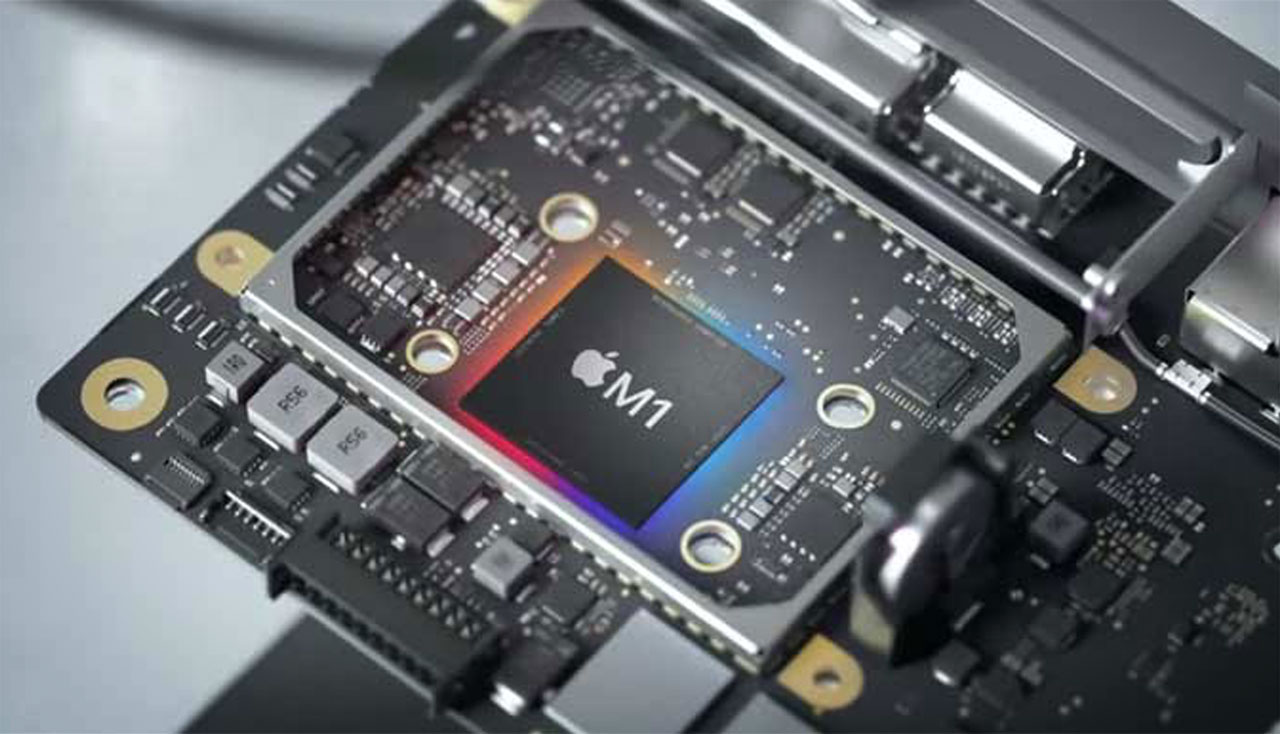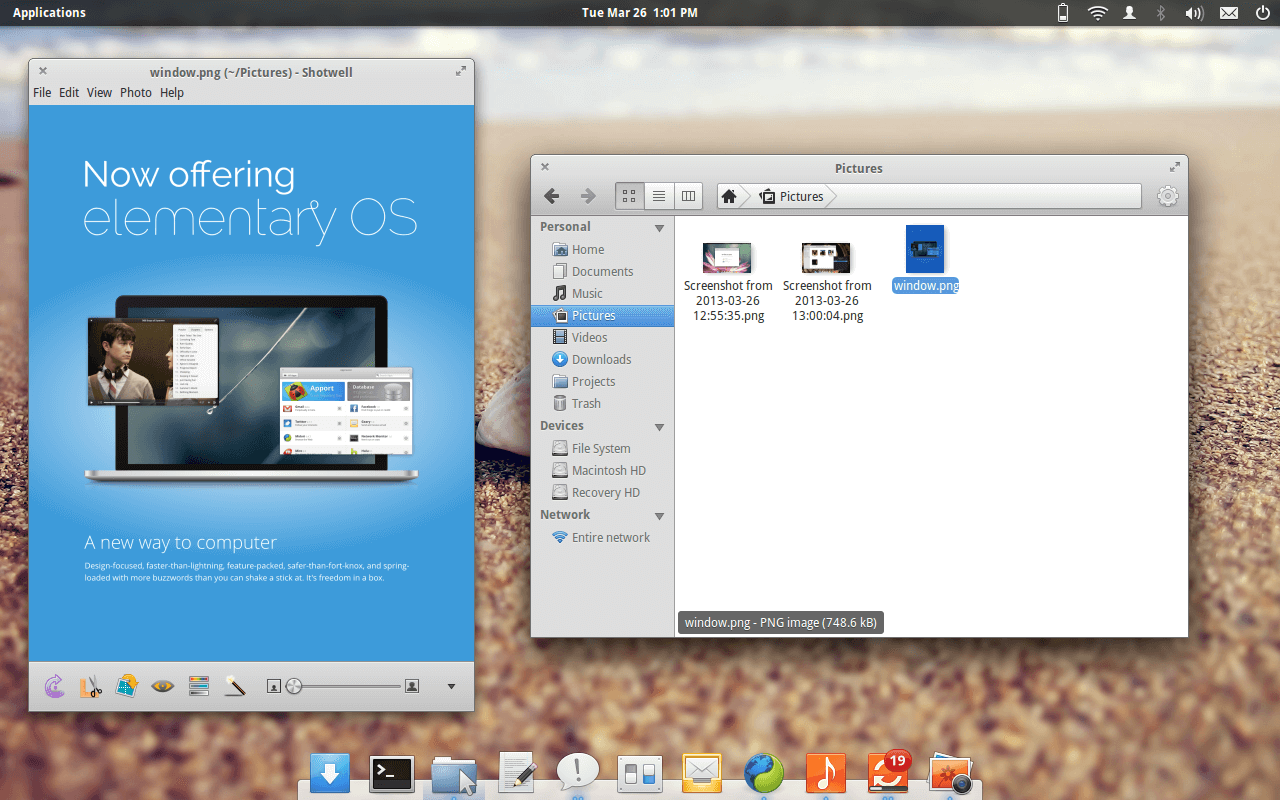Parallels Access and Parallels Toolbox apps have native support for M1 Mac Computers
Bellevue, Wash.—April 14, 2021 — Parallels®, a global leader in cross-platform solutions, today released the highly anticipated Parallels Desktop 16.5 for Mac (parallels.com/desktop), which features full native support for Mac computers equipped with either Apple M1 or Intel chips. Experience Windows 10 ARM Insider Preview and its applications on Apple M1 Mac computers.2 The M1 chip’s superior performance delivers the world’s fastest integrated graphics in a personal computer, revolutionary power efficiency, and was designed to work with macOS Big Sur3—which Parallels Desktop 16.5 transforms into a new standard for a seamless Windows-on-Mac experience. It also delivers M1 support for the most popular ARM-based Linux distributions. Separate Parallels Access (parallels.com/access) and the just-redesigned and simplified Parallels Toolbox (parallels.com/toolbox) apps, which are both included for free concurrently with Parallels Desktop subscriptions, now also provide native support for M1 Mac computers.
User-friendly Linux distro, similar to Windows, and lightweight – Linux Mint – Ubuntu and Debian-based; Best Linux distro, extremely easy to use for first-time users. One of the top Linux distros in 2020 for beginners – Ubuntu; Best Mac OSX look-a-like Linux distro, and a very pretty looking Linux distro – Elementary OS – Debian-based. Linux distros come in all shapes and sizes. From miniscule ones that weigh in at just over 100 MB and can be lugged around in USB disks to 4GB behemoths that work best when installed on. I've picked me up a G4 Mac Mini 1.33GHz PPC variant, and plan on running an in home web/file/torrent/icecast server. It's difficult to choose the linux distribution though because nothing over 12.04 LTS seems to work right, and PPC support isn't mainstream anymore.
Linux Mint is the distro that you probably want to use if you don’t pick Ubuntu GNOME. It is based on Ubuntu and its developers are determined to fix all the issues that Ubuntu users complain about. Linux Mint is, in a manner of speaking, a cooler Ubuntu, and its UI is easy to navigate. It will be a good pick to run on your Mac. Puppy Linux is one of the oldest lightweight distros out there. The project has been turning out slim, sleek and fast distros for over 15 years now, and offers different versions depending on the.
'Apple's M1 chip is a significant breakthrough for Mac users,” said Nick Dobrovolskiy, Parallels Senior Vice President of Engineering and Support. “The transition has been smooth for most Mac applications, thanks to Rosetta technology. However, virtual machines are an exception and thus Parallels engineers implemented native virtualization support for the Mac with M1 chip. This enables our users to enjoy the best Windows-on-Mac experience available.”
More than 100,000 M1 Mac users tested the Technical Preview of Parallels Desktop 16.5 for M1 Mac and ran Microsoft’s Windows 10 on ARM Insider Preview, as well as tens of thousands of different Intel-based Windows applications—including Microsoft Office for Windows, Microsoft Visual Studio, SQL Server, Microsoft PowerBI and MetaTrader.
“We received enthusiastic feedback about the remarkable performance of both the Technical Preview of Parallels Desktop 16 for M1 Mac and Windows 10 on ARM Insider Preview as well as x86 applications and games, including Rocket League, Among Us, Roblox, The Elder Scrolls V: Skyrim, Sam & Max Save the World and many others. Testers loved Parallels Desktop’s easy-to-use features and seamless integration of Windows with macOS Big Sur, which increased productivity,” said Dobrovolskiy.
Watch a video demo of how to install virtual machines (VMs) in Parallels Desktop 16.5 on an M1 Mac: www.parallels.com/VMonM1Mac.
The virtualization approach for Parallels Desktop 16.5 for Mac enables users to benefit from Apple’s M1 chip performance advancements—applications run faster and more efficiently. Performance observations include:
- Up to 250 percent less energy used: On a Mac with an Apple M1 chip, Parallels Desktop 16.5 uses 2.5 times less energy than on a 2020 Intel-based MacBook Air computer.4
- Up to 60 percent better DirectX 11 performance: Parallels Desktop 16.5 running on an M1 Mac delivers up to 60 percent better DirectX 11 performance than on an Intel-based MacBook Pro with Radeon Pro 555X GPU.5
- Up to 30 percent better virtual machine performance (Windows): Running a virtual machine (VM) of Windows 10 on ARM Insider Preview on Parallels Desktop 16.5 on an M1 Mac performs up to 30 percent better than a Windows 10 VM running on Intel-based MacBook Pro with Intel Core i9 processor.6
“I installed Parallels Desktop 16.5 for Mac and Windows 10 on ARM Insider Preview on my M1 Mac Mini because, as a math teacher, several software apps that I use are no longer supported on M1 Mac,” said Daniel Dudley, Albuquerque, NM, United States. “Running Windows on my M1 Mac in Parallels Desktop 16.5 has been awesome. It’s the fastest version of Windows that I have ever had!”
Parallels Desktop 16.5 for Mac also supports guest operating systems (OSs) on M1 Mac computers including Linux distributives Ubuntu 20.04, Kali Linux 2021.1, Debian 10.7 and Fedora Workstation 33-1.2.
“I absolutely love being able to run Linux environments within Parallels Desktop 16.5 on my M1 Mac,” said Darren Paxton, United Kingdom. “The performance is simply amazing.”
All the best Parallels Desktop 16 for Mac features have been re-engineered for the Apple M1 chip, including:
- Coherence Mode: Run Windows applications on your Mac as if they were native Mac applications, without managing two separate desktops or rebooting.
- Shared Profile: Share your Mac desktop, pictures, documents, and other folders with a VM for easy access.
- Touch Bar controls: Quickly access apps in your virtual machine and customize your Touch Bar shortcuts to feature the apps and commands you use most.
- Mac keyboard layouts: Easily customize your keyboard menu and shortcuts for a more personalized experience.
- Hundreds of other Parallels Desktop features are included to help make it simple for customers be more productive.
- macOS Big Sur in a VM is a feature that Parallels hopes to add support for in Parallels Desktop later this year.
Highlights of Parallels Desktop 16’s extensive features for Intel-based Mac computers are available in this press release. Intel-based Parallels Desktop for Mac customers can run more than 50 supported guest OSs, including several versions of Windows, macOS, OS X, Linux, as well as Android OS and dozens more.
Availability and Pricing
All editions of Parallels Desktop 16.5 update for Mac support both M1 and Intel Mac computers (Standard Edition, Pro Edition and Business Edition). They can be purchased either online at parallels.com/desktop (which also offers free full-featured 14-day trials) or from retail and online stores worldwide. Parallels Desktop subscriptions include complimentary concurrent subscriptions to Parallels Access, and just-redesigned and simplified Parallels Toolbox for Mac and Windows, which are also separately available for free trials and subscriptions at parallels.com.
Anyone with a Parallels Desktop 16 for Mac license can get an automatic update to Parallels Desktop 16.5 at no additional cost. And, when new full versions of Parallels Desktop for Mac are released annually, customers with active subscriptions receive complimentary upgrades, which ensure support for the latest OSs, hardware, and Parallels Desktop’s innovative features.

Running VMs on Apple M1 Mac computers in Parallels Desktop 16.5 requires ARM-based operating systems (OSs). Customers who install guest operating systems in Parallels Desktop virtual machines are responsible for making sure that they are compliant with each OSs’ end-user licensing agreement (EULA).
Recommended Retail Price (RRP)
Best Linux Live Distros

Parallels Desktop 16.5 for Mac
- Upgrade your Parallels Desktop 14 or 15 to a perpetual license – US$49.99
- New subscription – US$79.99 per year
- New perpetual license – US$99.99
Parallels Desktop for Mac Pro Edition
- Upgrade from any edition – US$49.99 per year
- New subscription – US$99.99 per year
Parallels Desktop for Mac Business Edition
- US$99.99 per year
About Parallels
Parallels is a global leader in cross-platform solutions that make it possible and simple for businesses and individuals to use and access the applications and files they need on any device or operating system. Parallels helps customers leverage the best technology out there, whether it’s Windows, Mac, iOS, Android or the cloud. Parallels solves complex engineering and user-experience problems by making it simple and cost-effective for businesses and individual customers to use applications wherever they may be—local, remote, in the private datacenter or in the cloud. Parallels, a business unit of Corel, has offices in North America, Europe, Australia and Asia. Visit parallels.com/about for more information.
About Corel


Corel® products enable millions of connected knowledge workers around the world to do great work faster. Offering some of the industry's best-known software brands, Corel gives individuals and teams the power to create, collaborate, and deliver impressive results. Success is driven by an unwavering commitment to deliver a broad portfolio of innovative applications – including CorelDRAW®, MindManager®, Parallels®, and WinZip® – to inspire users and help them achieve their goals. To learn more about Corel, please visit www.corel.com.
Media Contacts
Best Linux Distro For Old Mac Mini
John Uppendahl, Vice President of Communications, john@parallels.com, +1 425 282-1734
Ryan Donough, Burson Cohn & Wolfe, ryan.donough@cohnwolfe.com, +1 415 403-8311
- Running Windows at native speeds on your Mac depends upon its hardware configuration. Parallels Desktop for Mac has more than seven million customers.
- Running VMs on Apple M1 Mac computers in Parallels Desktop 16.5 requires ARM-based operating systems (OSs). Customers who install guest operating systems in Parallels Desktop virtual machines are responsible for making sure that they are compliant with each OSs’ end-user licensing agreement (EULA).
- Apple M1 chip performance, power efficiency, and information is from https://www.apple.com/mac/m1/.
- Performance measurements conducted by Parallels by measuring Mac power consumption with Windows 10 running. Tested with a pre-released version of Parallels Desktop 16.5 on MacBookAir10,1 with Apple M1 chip and 16GB RAM versus MacBookAir8,2 with Intel Core i5-8210Y and 8GB RAM. The performance will vary based on usage, system configuration, and other factors.
- Performance measurements conducted by Parallels by running the Unigine Valley benchmark for DirectX 11 API and comparing an average score out of five iterations on each computer. Tested with a pre-release version of Parallels Desktop 16.5 on MacBookPro17,1 with Apple M1 chip and 16GB RAM versus MacBookPro15,1 with Intel Core i9-8950HK, 16GB RAM and Radeon Pro 555X GPU. The performance will vary based on usage, system configuration, and other factors.
- Performance measurements conducted by Parallels by running the Geekbench 5 benchmark and comparing an average score out of five iterations on each computer. Tested with a pre-release version of Parallels Desktop 16.5 on MacBookPro17,1 with Apple M1 chip and 16GB RAM versus MacBookPro15,3 with Intel Core i9-8950HK, 32GB RAM and Radeon Pro Vega 20 GPU. The performance will vary based on usage, system configuration, and other factors.
©2021 Parallels International GmbH. All rights reserved. Parallels, the Parallels logo, and Coherence are trademarks or registered trademarks of Parallels International GmbH in Canada, the U.S., and/or elsewhere. Corel, CorelDRAW, MindManager, and WinZip are trademarks or registered trademarks of Corel Corporation in Canada, the U.S. and elsewhere. Apple, Mac, macOS, and Launch Pad are trademarks of Apple Inc. Android is a trademark of Google LLC. Linux is a trademark of Linux Foundation. Windows Microsoft Office, Visual Studio, and SQL Server are trademarks of Microsoft. All other company, product and service names, logos, brands, and any registered or unregistered trademarks mentioned are used for identification purposes only and remain the exclusive property of their respective owners. Use of any brands, names, logos or any other information, imagery, or materials pertaining to a third party does not imply endorsement. We disclaim any proprietary interest in such third-party information, imagery, materials, marks, and names of others. For all notices and information about patents please visit https://www.parallels.com/legal/
17th December 2014
I bought in 2006 a MacMini. That year there were two MacMini releases, mine corresponding to the older model (MA206LL/A, Model Number A1176, Model Id: Macmini1,1), with a 1.66 GHz Intel Core Duo (32 bits).
It had a slow 80Gb harddisk and 512 Mb of memory, which I immediately updated to 1 Gb. It run Os X Tiger; eventually it would be upgraded to Leopard and then to Snow Leopard. It was never my main computer, and by 2011, at latest, it had been safely stored in some storage box. My main computer in 2006 was a 2003 Dell laptop, and when its power supply died those Christmas, I could not use the Mac Mini as replacement, and I bought quickly an Acer desktop. Although I later replaced the Dell's power supply, the Acer desktop would become my main computer until the end of 2008, when I built up my first Hackintosh.

The Acer desktop was a noisy beast, and is definitely the only computer I have owned which I have professed zero love. Is still alive, upgraded from the original Windows XP to Windows Vista, and has been lent to one friend or other for the best of 4 years. At some moment I measured the energy it used, and it was somewhere around 150 Watts; mind you, it had a discrete graphics card (Nvidia GT8600), but the Mac Mini, slightly older, only drew 20-25 watts on same conditions.
The quietness and low power requirements of the MacMini made me think recently about upgrading this machine and use it as generic home server. I had a 128 SSD unused, so I needed only purchasing the CPU and memory. Prices were really low: a much improved Core 2 Duo T7200 (64 bits) costed me 16 euros in Ebay, and 2 modules of 1 Gb costed 15 euros in Amazon, so the full upgrade was just around 30 euros. In fact, this machine could have been upgraded to a T7600 and 4 Gb (although only using a bit over 3 Gb), but that upgrade was almost 100 euros.
Funny that the very latest MacMini is rather cheap, at 520 euros, but accepts no user upgrades at all...
Best Linux Distro For Writing
The upgrade was not simple, but neither overly complicated. The guides from iFixit made definitely all the difference:
These updates were purely mechanical (but my dexterity played definitely against me here :-). One additional change I did at this level was disconnecting the speaker, displayed on the right figure, also from iFixit. Listening the bell each time I boot the machine was definitely no pleasure...
In addition to these physical changes, I had to update the firmware; the default one would not recognise USB 2.0 keyboards until the operating system was running. Although I have USB 1.1 keyboards, the default one is an Apple USB 2.0. There is a way to upgrade the initial firmware (Macmini1,1) to (Macmini2,1), which would also allow me to add additional RAM. This upgrade is documented here, see the 24th post, by Diogenes, Nov 20, 2011, 01:31 PM. It contains a zip file (...) and instructions to perform the update, which must be done from OsX. For completeness, I am including the EFI updater archive, although I would recommend download it from the original post, in case some updates are made on the meantime...
To install the operative system, the best option in this machine is to use the CD-ROM. After some considerations about using FreeBSD, I decided to install Ubuntu 14.10 server (64 bits) - OsX was never an option, and, in any case, the latest version of OsX that could be installed in this machine would have been OsX Lion.
Now, there is a problem: This is a 32-bit EFI Mac, and its just refuses to boot from a UEFI(X64)+BIOS bootable CD/DVD, which as it goes, is the format of the Ubuntu server installation disc. There is a solution: to remove UEFI support from the CD first.
Now, this CD can be used to install Ubuntu without problems. And now my MacMini is happily running Ubuntu Server...